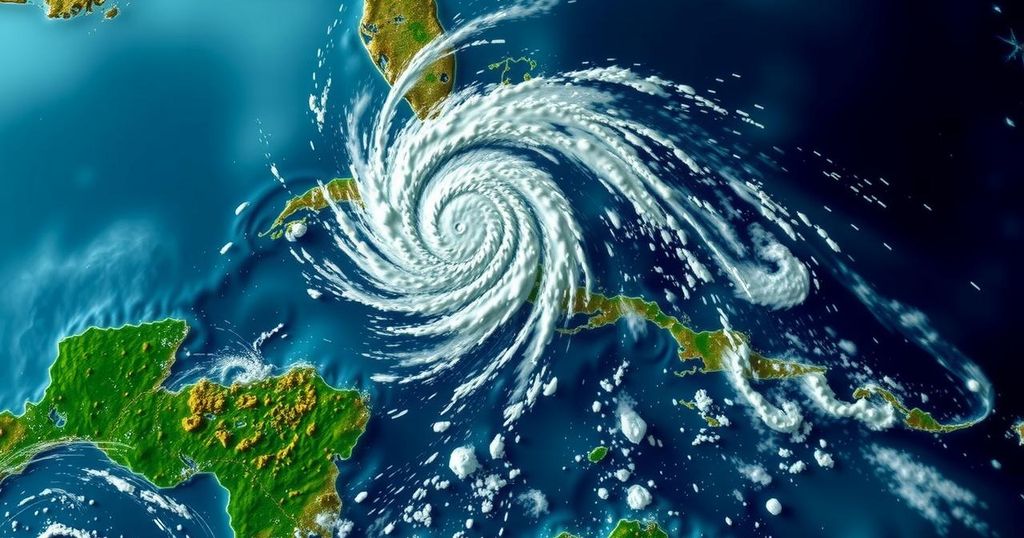The National Hurricane Center is monitoring three meteorological disturbances with the potential to develop into tropical cyclones, particularly one that may develop into a storm in the Gulf of Mexico next week, with a 60% chance of formation. Heavy rains are anticipated across parts of the Caribbean, and residents should stay aware as the hurricane season progresses.
The National Hurricane Center (NHC) is currently monitoring a notable trio of meteorological disturbances that have the potential to evolve into tropical or subtropical cyclones in the near future. Among these systems, one is projected to develop into a storm in the Gulf of Mexico within the forthcoming week. As reported this morning by the NHC, a broad low-pressure area is anticipated to manifest over the southwestern Caribbean Sea in the next day or so. As this system matures, there is a possibility that a tropical depression may arise by late this weekend or early next week, as it progresses generally northward or northwestward through the central or western Caribbean Sea. The NHC has stated, “Regardless of development, locally heavy rains are possible over portions of the adjacent land areas of the western Caribbean.” They currently assess a 60% probability of tropical cyclone formation over the ensuing seven days. Recent global computer forecasting models are beginning to converge on the likelihood that this disturbance will migrate into the Gulf of Mexico over the next week, where it might escalate into a tropical storm or more severe system. While it is premature to definitively predict this outcome, the NHC emphasizes to residents along the U.S. Gulf Coast that hurricane season remains active until the end of November. Furthermore, the NHC continues to scrutinize conditions in the northeastern Caribbean Sea and the Greater Antilles. Observations from the surface and winds detected via satellite indicate that a trough of low pressure situated near Puerto Rico is causing extensive cloud cover and rainfall across the Dominican Republic, Puerto Rico, the Virgin Islands, the northern Leeward Islands, and surrounding waters in the Atlantic and northeastern Caribbean. The NHC notes that a gradual development of this system could occur over the next two to three days as it shifts west-northwestward near the Greater Antilles. Ultimately, the NHC predicts that this system will likely get absorbed into the broader low pressure area over the Caribbean region. Regardless of its development, significant precipitation is expected over the coming days across the northern Leeward Islands, Puerto Rico, Hispaniola, eastern Cuba, and the southeastern Bahamas. The third disturbance of concern is located in the far northern Atlantic. The NHC has identified a storm-force, non-tropical low pressure area approximately 450 miles west of the western Azores, which is generating limited shower activity. Although some subtropical development may occur as this low moves generally eastward in the next few days, the NHC places the odds of a subtropical storm forming here at only 20% over the next week.
The subject of this article pertains to the active monitoring by the National Hurricane Center of various disturbances in the Caribbean and Atlantic regions. As hurricane season persists, the NHC provides updates on systems that may develop into tropical cyclones, which pose significant risks including heavy rainfall and potential storm development that could impact coastal areas. Understanding these systems is crucial for preparedness and risk mitigation during the hurricane season, which lasts from June 1 to November 30 each year.
In summary, the National Hurricane Center is tracking three key weather disturbances, particularly one expected to develop in the Gulf of Mexico with a significant chance of becoming a tropical storm. There are also two other systems of concern that may bring heavy rainfall and potential development in the Caribbean and Atlantic regions. Residents in the U.S. Gulf Coast and neighboring areas should remain vigilant as the hurricane season continues through November.
Original Source: weatherboy.com






